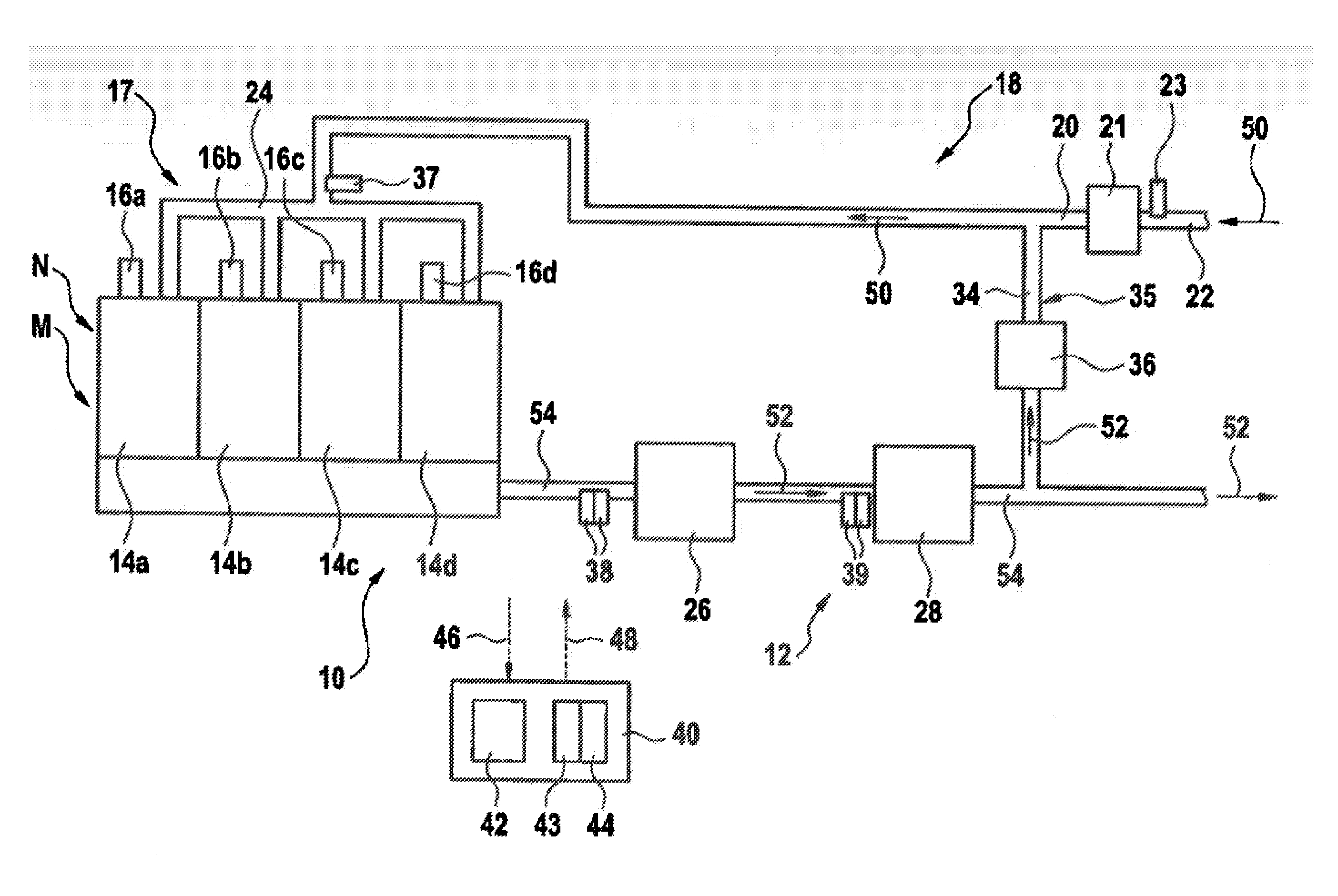Method for operating an internal combustion engine
a technology of internal combustion engine and combustion chamber, which is applied in the direction of electrical control, process and machine control, instruments, etc., can solve the problems of temporarily high unwanted exhaust components, and achieve the effects of reducing nox emissions, reducing oxygen fraction, and reducing exhaust components overall
- Summary
- Abstract
- Description
- Claims
- Application Information
AI Technical Summary
Benefits of technology
Problems solved by technology
Method used
Image
Examples
Embodiment Construction
[0032]Identical reference signs are used for functionally equivalent elements and variables in all the figures, even where the embodiments are different.
[0033]FIG. 1 shows a highly simplified schematic representation of an internal combustion engine 10 having an exhaust system 12. The internal combustion engine 10 on the left of the drawing has four cylinders 14a to 14d, into which fuel can be injected by means of four injection valves 16a to 16d. The injection valves 16a to 16d are part of an injection system 17 of the internal combustion engine 10. An air system 18 comprises an air duct 20 and an intake pipe 24, which is arranged adjacent to the internal combustion engine 10. At the top right in the drawing, the air system 18 has an actuator 21 for controlling the quantity of air flowing in. An air mass flow 22, which can be measured by an air mass meter 23 arranged upstream of the actuator 21, flows through the air duct 20.
[0034]Working from left to right in the drawing, a cataly...
PUM
 Login to View More
Login to View More Abstract
Description
Claims
Application Information
 Login to View More
Login to View More - R&D
- Intellectual Property
- Life Sciences
- Materials
- Tech Scout
- Unparalleled Data Quality
- Higher Quality Content
- 60% Fewer Hallucinations
Browse by: Latest US Patents, China's latest patents, Technical Efficacy Thesaurus, Application Domain, Technology Topic, Popular Technical Reports.
© 2025 PatSnap. All rights reserved.Legal|Privacy policy|Modern Slavery Act Transparency Statement|Sitemap|About US| Contact US: help@patsnap.com



